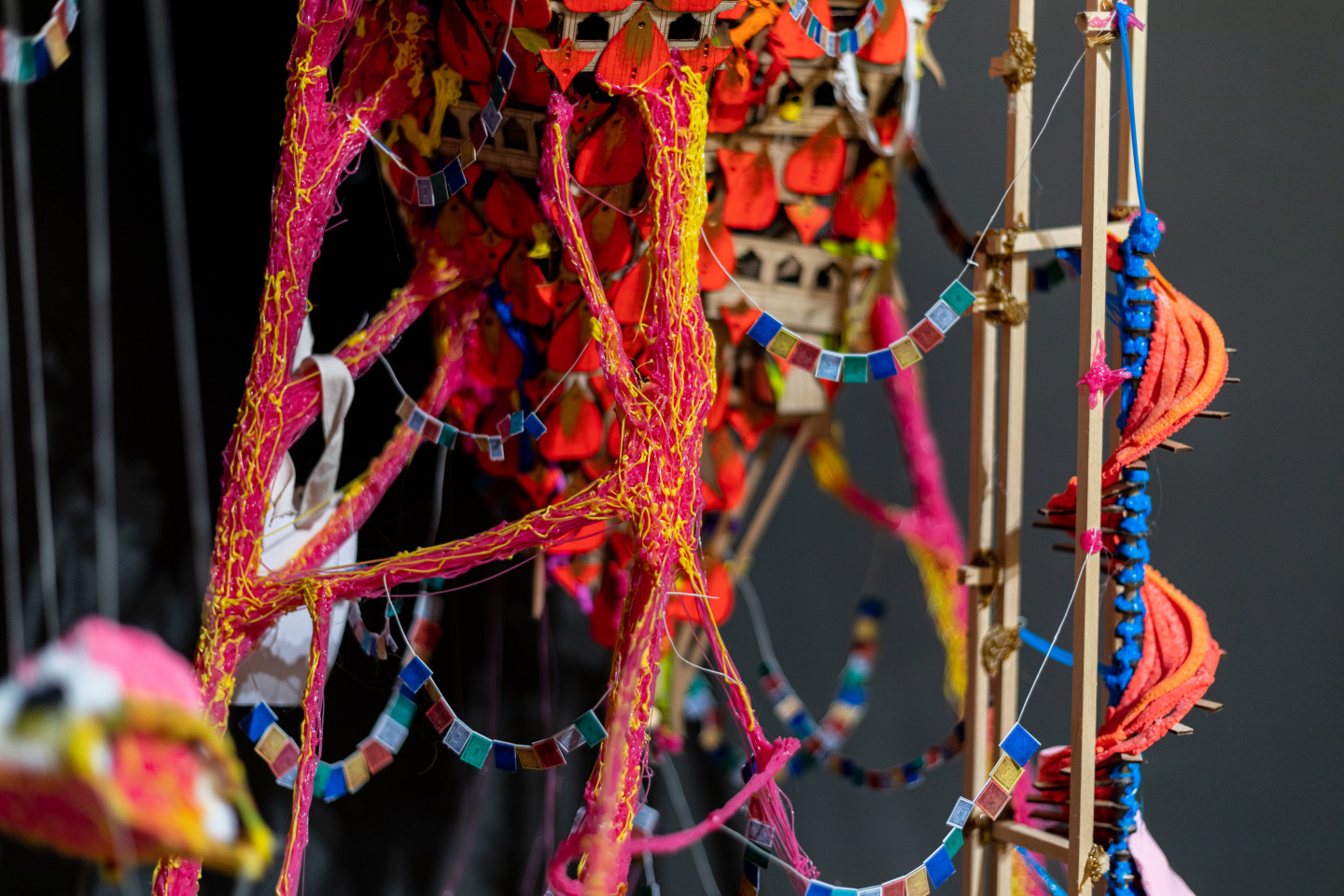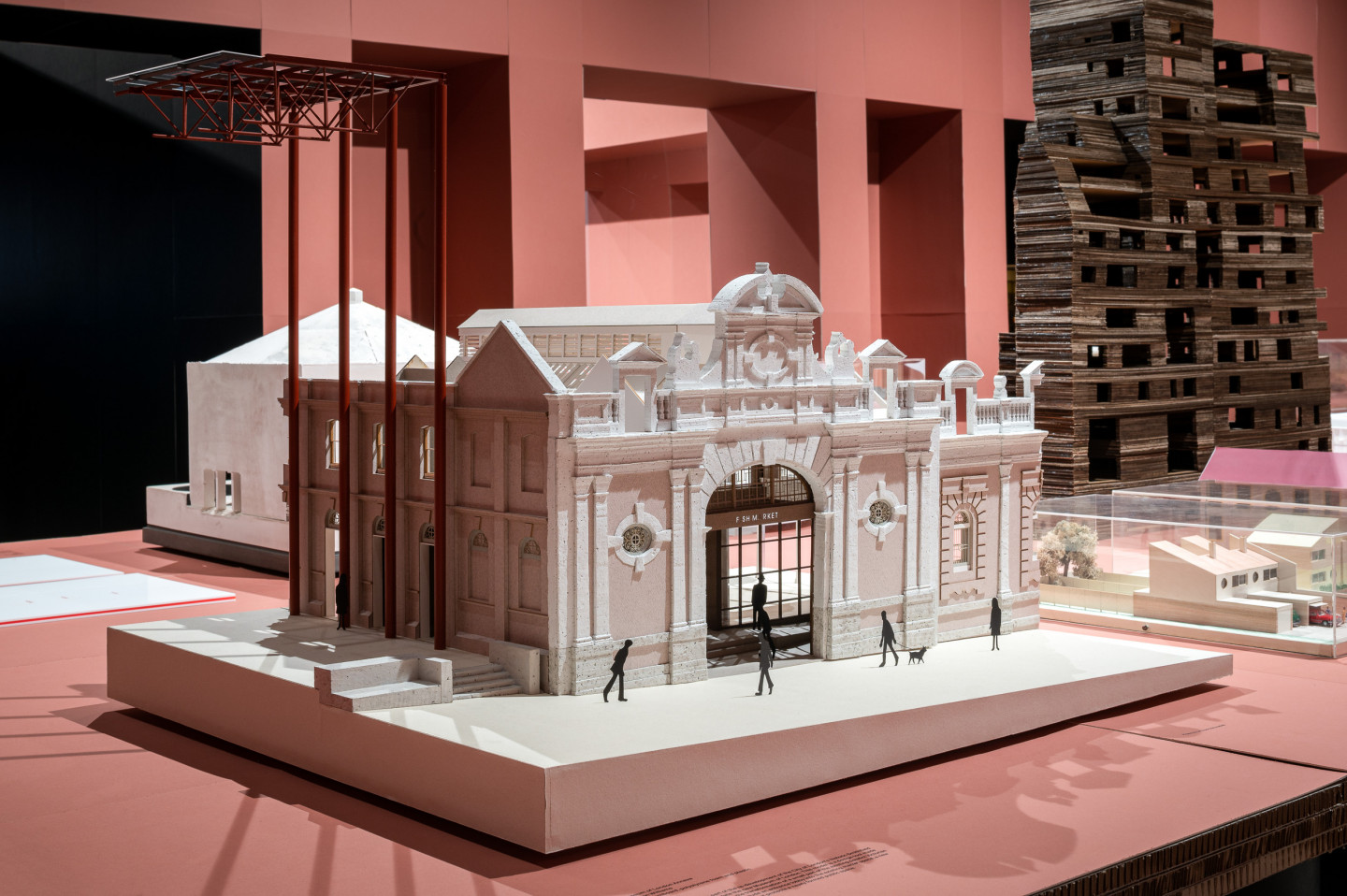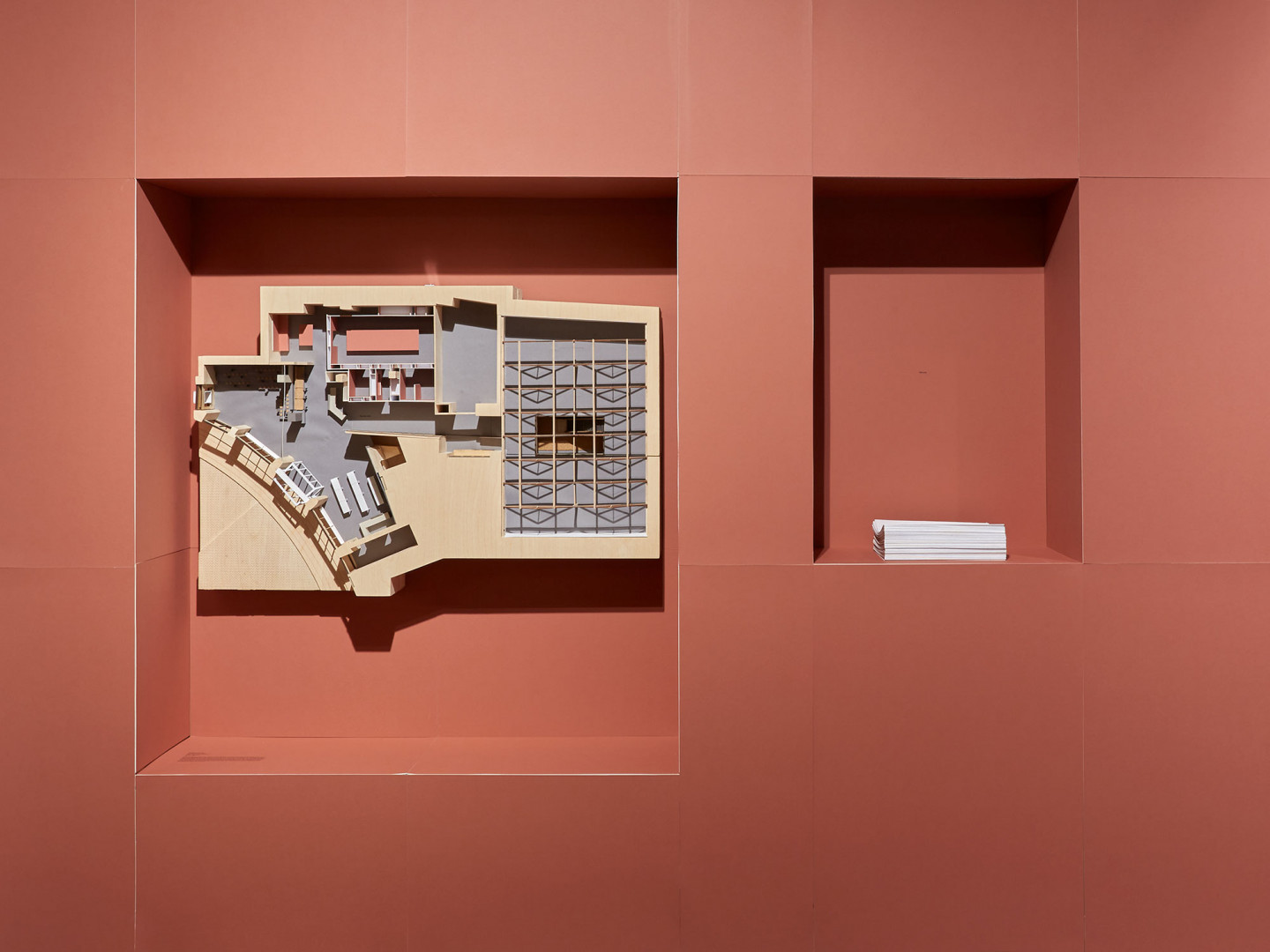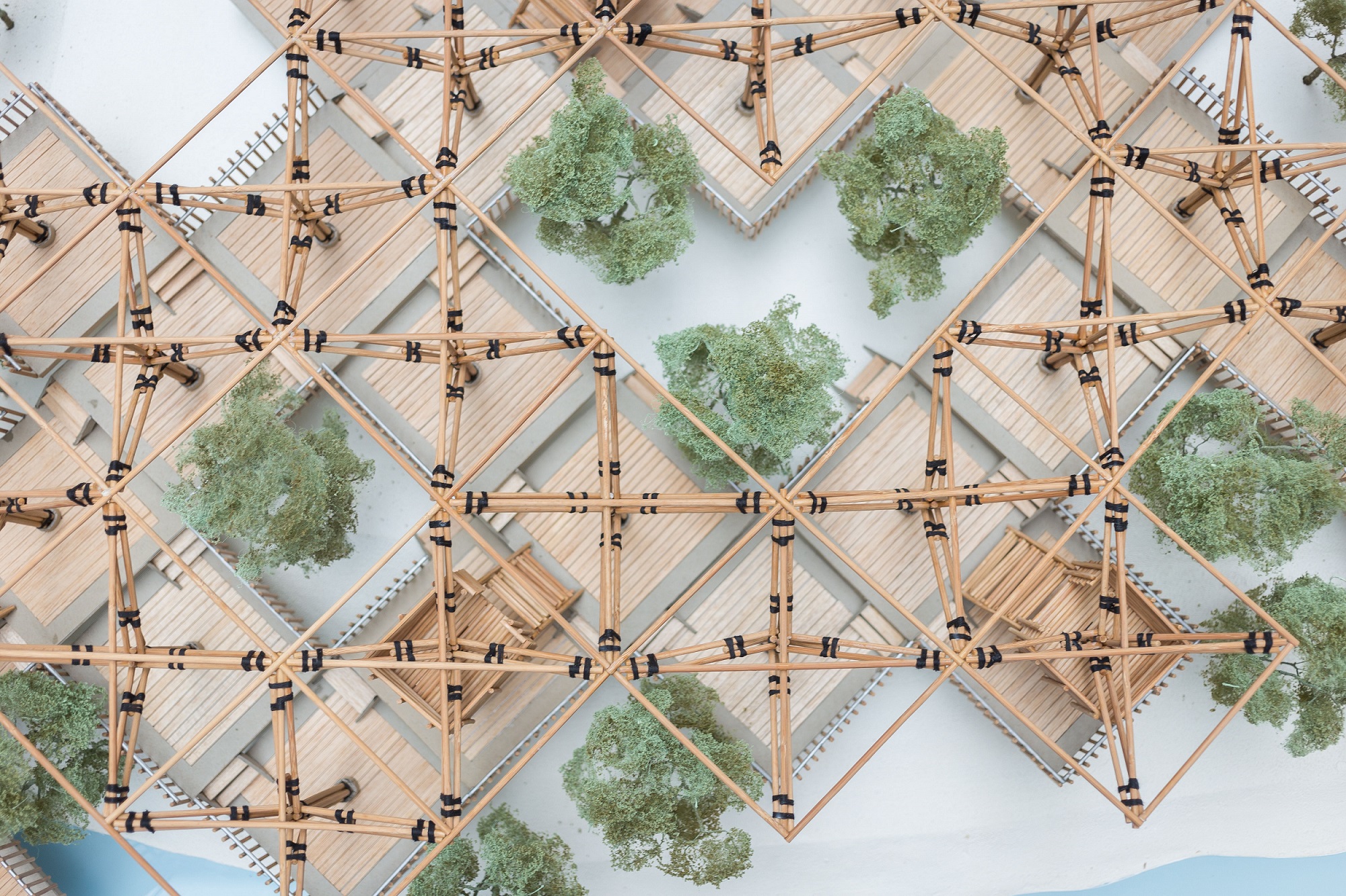Shaping Space – Architectural Models Revealed was open at the Building Centre from 24 September 2021 until 5 March 2022.
The exhibition celebrated the role of architectural models in shaping the spaces we live in. A collaboration between the V&A and the Building Centre, Shaping Space – Architectural Models Revealed presented the world in miniature; a collection of historical and contemporary models that reveal the evolution of architecture from the first maquette made as a tool for thinking, to a presentation model – a scaled down replica of an architectural intention saying; ‘here I am’.
The collection of models on show responded to three questions: Why are models made? How are models made? And who are models made for?
Architectural models are as old as architecture itself. The exhibition explored the history of models, and highlighted the renaissance of craft and the values of making today, alongside the rise of new technologies that mark how the digital age is changing our experience of and access to architectural space.
As children, we encounter scale with wooden blocks and plastic bricks so that we become the master planners of our own tiny cities. From super-sized to miniature, Shaping Space invited the public to experience the spectacle of environments at different scales. The show celebrated the act of thinking through making, presenting the evolution of ideas through models in architectural education and practice. The exhibition examined how models are a testbed for material experimentation and will touch on themes and debates central to current architectural practice, such as sustainability.
The exhibition included models by:
AAU Anastas; Aberrant Architecture; Adjaye Associates, courtesy of American Hardwood Export Council (AHEC); Alison and Peter Smithson; Álvaro Siza; Arch Model Studio; Arckit; ARU (Architectural Research Unit); Assemble; Automated Architecture (AUAR); B.15 Workshop, Manchester University (S. Miller and S. Parker-Backhouse); BDP, modelled by Amalgam; Bompas & Parr; Carmody Groarke; Charles Holland Architects; Dalia Matsuura Frontini; Dieter Cöllen; Dow Jones Architects; L’École Spéciale d’Architecture; Editional Studio; Ellie Sampson; Eugène Viollet-le-Duc; Forensic Architecture; Foster + Partners; GHA Group – Bloomsbury projection; Harvey Wiley Corbett, modelled by Theodore Conrad; Hawkins Brown Architects; J I Wolfson; James Gowan, modelled by Paul Shepheard; Jørn Utzon; Karen Britcliffe; Le Corbusier (Charles-Édouard Jeanneret); Louis Kahn; Lina Ghotmeh Architecture; Mary Duggan; OFFICE Kersten Geers David Van Severen; Peter Barber Architects; Peter Davies; Pierre-François-Léonard Fontaine; René Herbst, modelled by Nicolaas Warb; Roz Barr Architects; Sam Jacob Studio; ScanLAB Projects; So & So Studio; Stanton Williams; Studio MUTT; Sydney Waterlow, modelled by William Lovett; Théo Zanetti and MAP Laboratory, CNRS; Tony Fretton Architects; WilkinsonEyre; Zaha Hadid Architects.
Curated by the Building Centre exhibitions team (Vanessa Norwood, Harriet Jennings and Mathilde Savary) in partnership with Simona Valeriani of the V&A’s Research Institute (VARI), the collaborative exhibition was designed by award-winning practice Roz Barr Architects, with graphic design by Studio Mathias Clottu.
Shaping Space was accompanied by an events series, workshops, and an education programme led by Rebecca Goozee and Dr Marta Ajmar, from the V&A Research Institute, in collaboration with the Building Centre.
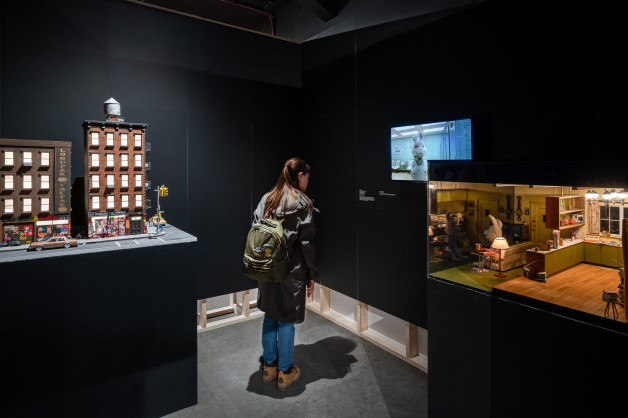
Shaping Space – Architectural Models Revealed builds on research carried out by the Arts and Humanities Research Council (AHRC) funded Architectural Models Network (2017-2019), an initiative set up to examine the role of architectural models as part of the creative process in historical and contemporary architectural practice. The core partners in the original network include the V&A, the Royal Institute of British Architects (RIBA), the Architectural Association (AA), Sir John Soane’s Museum, the Architekturmuseum (Technische Universität Munich), the MAP Laboratory (CNRS) and the Sorbonne.
The free exhibition is generously supported by the Arts and Humanities Research Council through Follow on Funding for Impact and Engagement (Principal investigator Dr. Simona Valeriani, co-investigator Dr. Marta Ajmar). It is also supported by the Built Environment Trust and the V&A.
The accompanying book, An Alphabet of Architectural Models, is available to order online.
Find out more about the wider project Shaping Space – Architectural Models in Context here.
Follow us on social media for all the latest news and announcements about the exhibition programme!
#ShapingSpace
@ArchModelsNet (Twitter) @archsmodelsnet (Insta)
@BuildingCentre (Twitter) @theBuildingCentre (Insta)
About the V&A Research Institute
The V&A Research Institute (VARI) leads the V&A’s research and academic partnership activities, across the breadth of the museum’s collections and practices. VARI hosts a varied portfolio of research projects, programmes and affiliations involving academics, makers, designers, conservators, and practitioners of all kinds, creating a unique research environment. VARI seeks to incubate new methods for interdisciplinary collections-led research and research-led teaching, and with support from the Andrew W. Mellon Foundation is taking the V&A’s long-established culture of research, postgraduate teaching and academic partnerships into a new phase.
About the Arts and Humanities Research Council
The Arts and Humanities Research Council (AHRC), part of UK Research and Innovation, funds internationally outstanding independent researchers across the whole range of the arts and humanities: history, archaeology, digital content, philosophy, languages and literature, design, heritage, area studies, the creative and performing arts, and much more. The quality and range of research supported by AHRC works for the good of UK society and culture and contributes both to UK economic success and to the culture and welfare of societies across the globe.
We would like to thank our supporters; 4D Modelshop, Amalgam Modelmaking, B.15 Workshop, Drawing Matter, GHA Group, The University of Manchester, MAP Laboratory (CNRS), and Model Platform.
